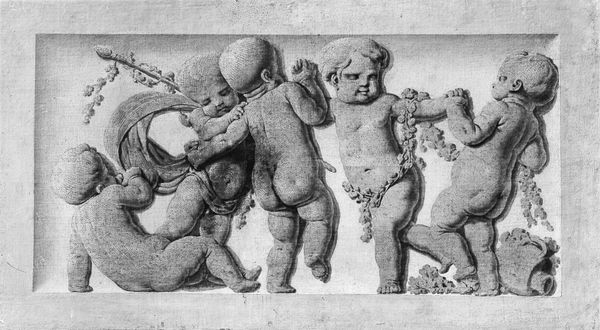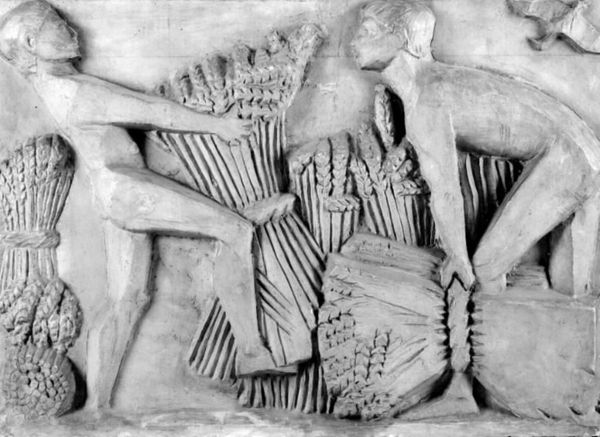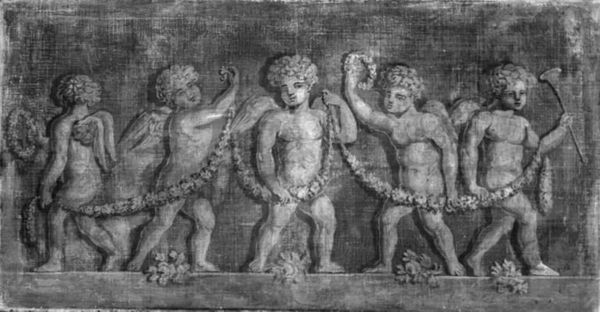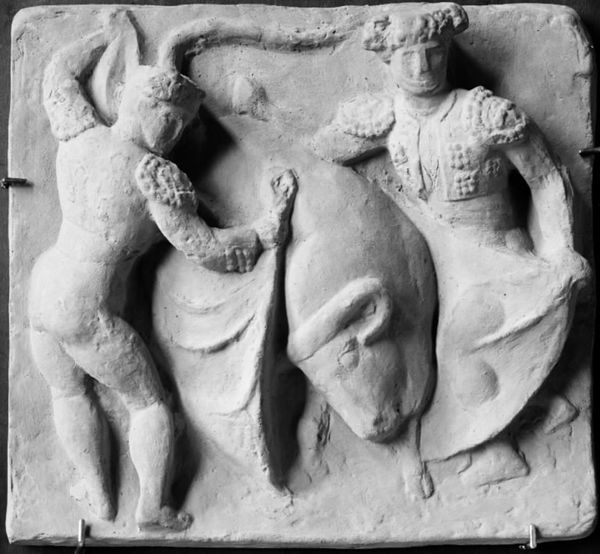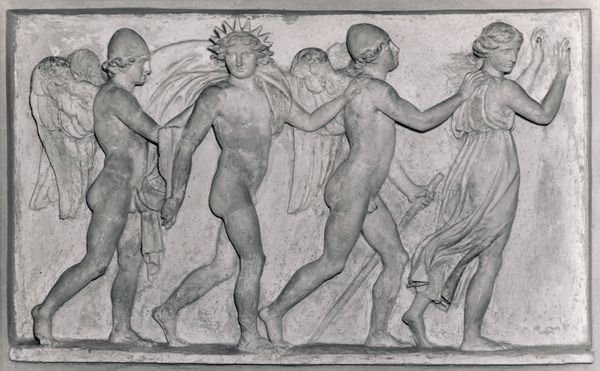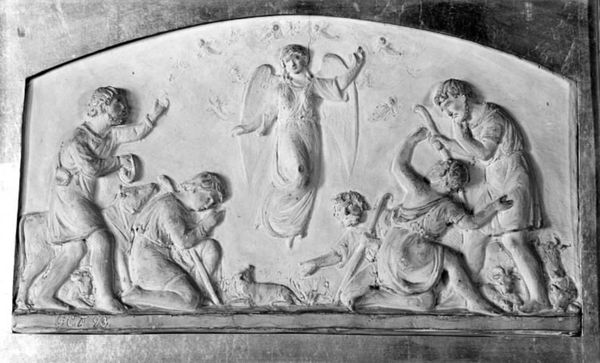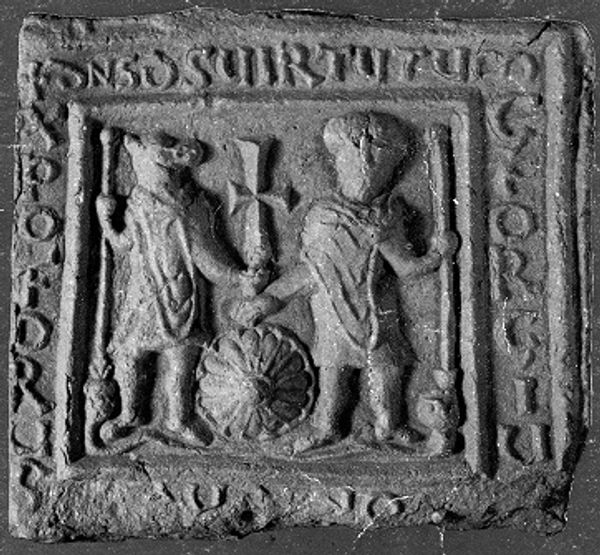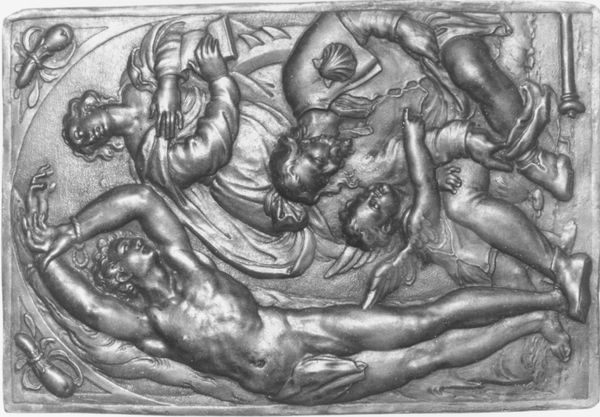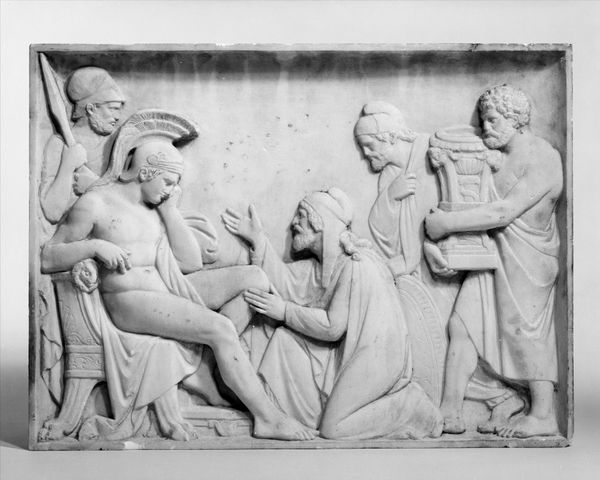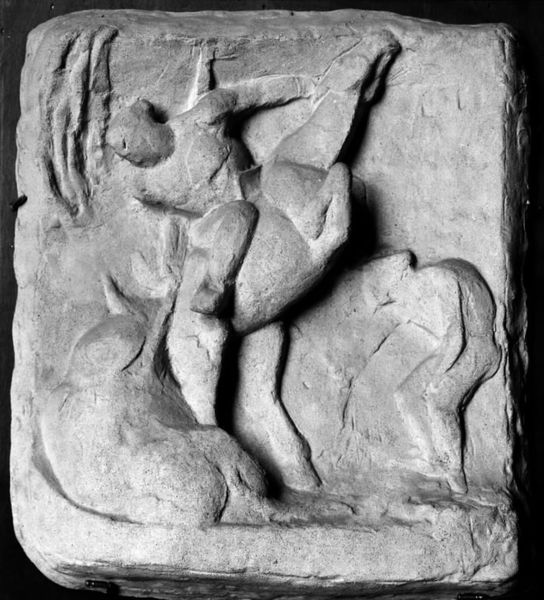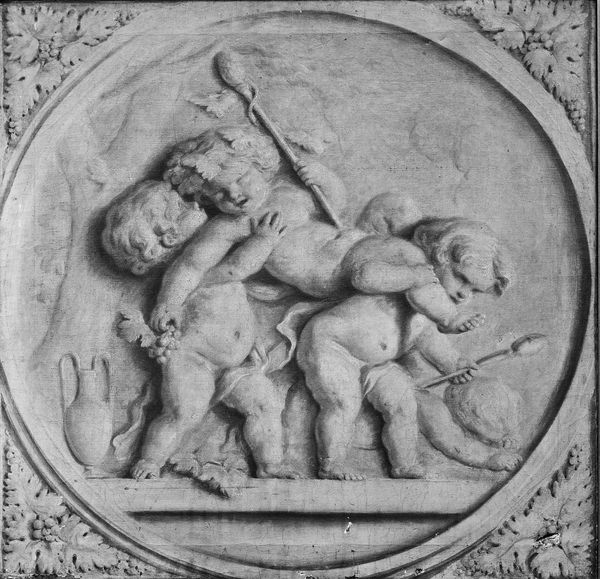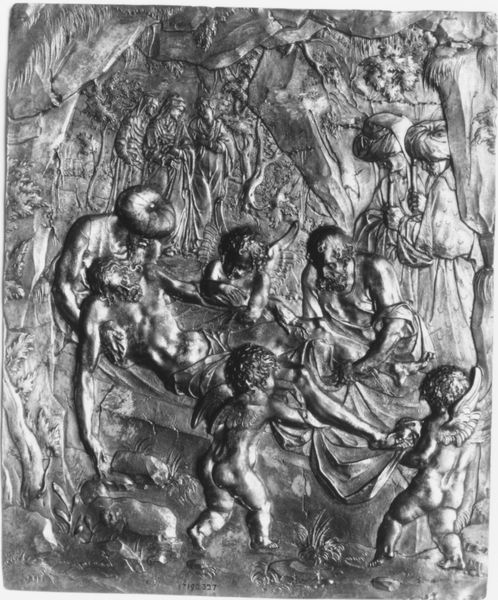
relief, sculpture, marble
#
neoclacissism
#
sculpture
#
relief
#
figuration
#
child
#
sculpture
#
genre-painting
#
decorative-art
#
marble
Dimensions: Overall: 17 1/2 × 31 1/8 in. (44.5 × 79.1 cm)
Copyright: Public Domain
Editor: We're looking at a marble relief called "Dancing Children," created sometime between 1770 and 1790. The artist is unknown. I find the figures to be rather weighty, almost like little, plump architectural details themselves. How do you interpret this work? Curator: Formally, the arrangement presents a compelling study in rhythm and balance. Notice the repeated circular forms—the children's chubby limbs, the tambourines, even their clustered hair. This generates a sense of continuous movement, contained within the static frame of the relief. What strikes you about the use of negative space? Editor: Well, it seems quite minimal. The figures are densely packed, almost overflowing the composition. Curator: Precisely. This density emphasizes the sculptural mass and draws attention to the subtle gradations of light and shadow across the marble. The artist skillfully uses varied depths of carving to create a sense of volume and dimensionality, even within the confines of the relief. Editor: So the limited negative space contributes to a feeling of contained energy? Like they're about to burst from the frame? Curator: Indeed. And consider the neoclassical style, how it evokes classical antiquity not just in subject matter, but also through the formal rigor and restrained emotion. The composition achieves a carefully constructed harmony and visual appeal. It presents us with an image of controlled joy, wouldn’t you agree? Editor: Absolutely. I initially overlooked the control present in the carving. I appreciate understanding that, formally, there is an effort being made to create a harmonious design. Curator: Observing how the forms interact, dictate the experience is crucial for understanding it as an artwork.
Comments
No comments
Be the first to comment and join the conversation on the ultimate creative platform.
